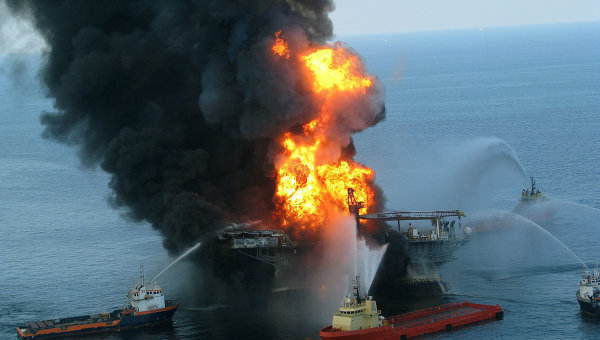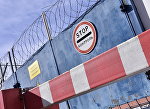MOSCOW, September 20 (RAPSI, Ingrid Burke) - The US Department of Justice (DOJ) announced Thursday that oil giant Halliburton had pleaded guilty to destroying evidence connected with the 2010 Deepwater Horizon Oil Spill.
Eleven oil rig workers lost their lives on April 20, 2010 when the Deepwater Horizon rig – stationed at the Macondo well site in the Gulf of Mexico – experienced a blow out, resulting in the most devastating offshore oil spill in US history.
Halliburton conducted its own review of the technical elements of the well’s design after the fact.
According to the DOJ statement, Halliburton pleaded guilty Thursday to having destroyed evidence connected with the disaster, in turn for which it was sentenced to the statutory maximum fine. Former Halliburton manager Anthony Badalamenti was additionally charged with one count of destruction of evidence.
According to the DOJ statement, “On or about May 3, 2010, Halliburton established an internal working group to examine the Macondo well blowout, including whether the number of centralizers used on the final production casing could have contributed to the blowout… Prior to the blowout, Halliburton had recommended to BP the use of 21 centralizers in the Macondo well. BP opted to use six centralizers instead.”
As part of the May 2010 review, the statement explains that Badalamenti directed a senior program manager working for Halliburton’s Cement Production Line to carry out a computer simulation in order to determine the effect that the suggested 21 centralizers would have had, compared to the six that BP opted for.
According to the statement, “[a]s detailed in the charging documents, the simulations indicated to those present that there was little difference between using six and 21 centralizers on the Macondo well. Badalamenti directed Program Manager to destroy these results, and Program Manager did so.”
US Attorney General Eric Holder lauded this most recent development in the Deepwater Horizon saga, stating: “Halliburton and one of its managers have now been held criminally accountable for their misconduct, underscoring our continued commitment to ensuring that the victims of this tragedy obtain justice, and to safeguarding the integrity of relevant evidence.”
A second similar instance of the destruction of evidence occurred the following month, according to the documents, and efforts to recover the destroyed evidence proved unsuccessful.
In January, a US federal judge approved a settlement for BP to pay a record $4 billion in criminal penalties and plead guilty to manslaughter and other charges for its role in the oil disaster. Then in February the DOJ announced that Transocean Deepwater Inc., the largest offshore drilling contractor in the world, had pleaded guilty to its role in the tragedy. Transocean specifically pleaded guilty to having negligently failed to properly investigate indications that the oil and gas well known as Macondo Prospect had become insecure.
In a DOJ statement issued at the time of Transocean’s guilty plea announcement, Assistant Attorney General Lanny A. Breuer lauded the plea for the closure it would bring to the crisis: “The Deepwater Horizon explosion was a senseless tragedy that could have been avoided. Eleven men died, and the Gulf’s waters, shorelines, communities and economies suffered enormous damage. With today’s guilty plea, BP and Transocean have now both been held criminally accountable for their roles in this disaster.”



